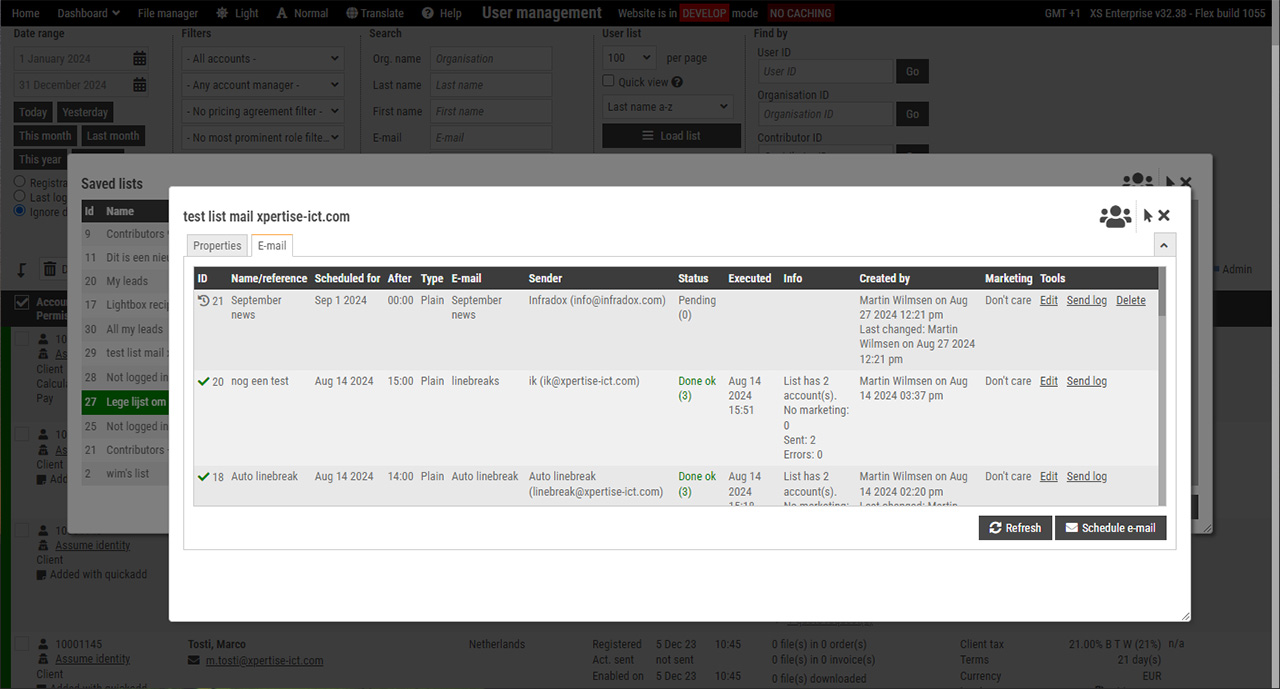In addition to full text searching for files, you can enable Set searching on your website. Set searching searches for galleries as opposed to files. The results will show the found galleries/sets and the user can click a thumbnail to view its contents. Although this is a very handy function for any Infradox XS website, it was specifically intended for websites that have many galleries/sets, e.g. sports events, celebrity events, photo stories and so on. Note that you can configure your ingestion procedures to automatically create galleries based on certain meta data rules, e.g. photos uploaded within one hour with the same title. You can find more information about this in our Knowledge base articles.
Recommended reading: Gallery processing, Data processing rules, Gallery management, Search filters and access & deny codes.
Set searching configuration
If you want to use the set searching function, you need to add the HTML and script for this function to the code editor. The template id is 77 (“Gallery Found galleries HTML”), you can type this id in the input box at the top of the code editor – and then click Go to load the template. Load the example template into the editor for a starting point. The example includes the xsfoundsets script object that you can leave in the page but you can also move it to the client script template. Which functions you’ll need to implement in the script object depends on your requirements (e.g. if you want to use search filters and so on). This is an advanced function that we are happy to implement for you according to your specifications. In its simplest form, all you need is the following tag which outputs the found galleries HTML.
Enabling set searching
To enable Set searching on the client facing pages, click Site configuration in the Administrator menu. Then click General settings on the left and click Show options in the Set searching section. In the drop down box, choose the 2nd or 3rd option to enable Set searching on your website. With the option “Display checkbox, default is off”, a checkbox will appear in the quick search area and it’s default setting will be off (i.e. Set searching is not active) With the other option, Set searching will be active by default. Clicking the checkbox toggles between “normal” full text searching for files and Set searching.
The Label input box allows you specify what to display next to the checkbox. E.g. Search for events or Search photo stories et cetera.
The Default text input box stores the text that is displayed in the search box if it’s empty and Set searching is on. E.g. Enter a name or event. When Set searching is switched off again, the text that you can enter in the section Quick search & Suggestions is displayed again.
Searching
When “Set searching” is active, you can search with AND, OR, and AND NOT. But wildcards are not supported. You can configure which fields you want to search by ticking the checkboxes for Title, Subtitle and Custom fields 1 through 10. Searching for multiple words without the AND operator defaults to an AND search. E.g. “young girl” searches for galleries/sets with the both words “young” and “girl”. The query “woman OR women”, searches for galleries/sets with either the word “woman” or the word “women”.
The “Whole words” option lets you specify if you want to find galleries if the entire search word is matched only. For example, if this setting is off, then searching for “dog” will find galleries that have “dogs” or “underdog” and so on.
The search results are limited to 1,000 sets. The results page will display the first X sets and when the user scrolls down, the next X sets are automatically retrieved and displayed and so on. “X” represents the number of galleries that you have configured via Site configuration > Gallery pages > Gallery group pages.
Filtering results
The set searching function has built-in support to refine the results by date. You can implement this in the user interface. E.g. to have the results page show a sidebar with refine options. The parameter for Time filtering can have the value 1) for the last 24 hours 2) for the last 7 days 3) for the last 31 days and 4) for the last 365 days.
The Year parameter can have any four digit year value. Note that the use of the Time and Year parameters are mutual exclusive.
The Spid parameter takes comma separated id’s of gallery groups that you want to search in.
Example search URL:
Preventing galleries from being searched
In the Gallery manager, you can exclude galleries within specific root levels from search results. If – for example – you have create a root level “Portfolios” and you don’t want the galleries that you have created to be searched, then edit the Portfoloo root level properties and tick the checkbox “Exclude from Set searching”.
Ordering the results
By default, the results are ordered as configured in the Gallery manager. You can however override this by selecting a sorting option in Site configuration > Search settings > Set searching. Available options are: date ascending, date descending or title.
Important
Note that – in addition to the above settings re excluding root levels from searches – there are many settings and conditions that may prevent certain galleries from being found. For instance galleries with Access control enabled may be excluded depending on whether or not the user is logged in or not, whether the user has access or deny codes active and so on. Galleries may also be excluded from searches if a subdomain is active (depending on the settings).




